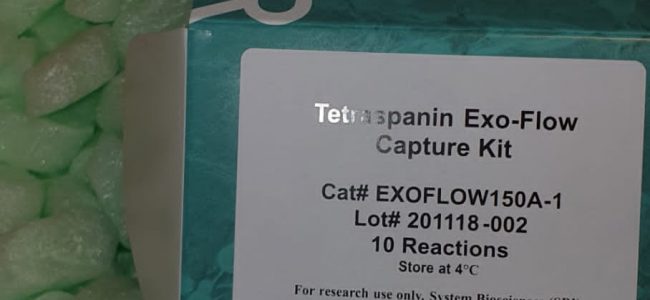biology cells questions
Propagation and Purification of Chlamydia trachomatis Serovar L2 Transformants and Mutants

Chlamydia trachomatis (C.t.) is an obligate intracellular pathogen that can’t be cultured axenically and have to be propagated inside eukaryotic host cells. There are no less than 15 distinct chlamydial serovariants that belong to 2 main biovars generally known as trachoma and lymphogranuloma venereum (LGV). The invasive chlamydia LGV serovar L2 is essentially the most broadly used experimental mannequin for finding out C.t. biology and an infection and is the one pressure with dependable genetic instruments out there.
New strategies to genetically manipulate C.t. L2 have supplied alternatives to make mutants utilizing TargeTron and allelic change in addition to strains overexpressing epitope-tagged proteins, in flip necessitating the common purification of transformant and mutant clones. Purification of C.t. is a labor-intensive train and one of the most typical reagents classically used within the purification course of, Renografin, is not commercially out there.
The same formulation of diatrizoate meglumine referred to as Gastrografin is available and we in addition to others have had nice success utilizing this in place of Renografin for chlamydial purifications. Here, we offer an in depth normal protocol for an infection, propagation, purification, and titering of Chlamydia trachomatis serovar L2 with further notes particularly pertaining to mutants or recombinant DNA carrying clones.
Mesenchymal stem cells have the flexibility to distinguish into a number of lineages, together with adipocytes, osteoblasts and chondrocytes. Mesenchymal stem cells might be induced to distinguish into chondrocytes in furthercellular matrices, similar to alginate or collagen gel. Mesenchymal stem cells in a cell pellet or micromass tradition might be additionally induced to type cartilages in an outlined medium containing chondrogenic cytokines, similar to reworking development factor-β (TGF-β).
Here, we describe a easy technique to type cartilage by seeding mesenchymal cells derived from limb-bud cells at excessive cell density. First, we dissected the limb buds from embryonic mice (embryonic day 12.5) and digested them with enzymes (dispase and collagenase). After filtration utilizing a cell strainer, we seeded the cells at excessive density. Unlike different strategies, the strategy described right here is straightforward and doesn’t require the use of specialised tools, costly supplies or complicated reagents.
Reductive Transformation of Fe(III) (oxyhydr)Oxides by Mesophilic Homoacetogens within the Genus Sporomusa
Microbial discount of iron contributes to the dissolution and transformation of iron-containing minerals in nature. Diverse teams of homoacetogenic micro organism (homoacetogens) have been reported to cut back insoluble Fe(III) oxides, similar to hydrous ferric oxide (HFO), an Fe(III) mineral generally present in soils and sediments. Several members of genus Sporomusa reportedly oxidize Fe(0), indicating the presence of an extracellular electron-uptake mechanism.
However, the flexibility of the genus to cut back insoluble Fe(III) oxides is restricted, and the underlying discount mechanism stays to be elucidated. In this research, the HFO discount capacity of three Sporomusa spp. (Sporomusa sp. pressure GT1, Sporomusa sphaeroides, and Sporomusa ovata) and a homoacetogen of a special genus (Acetobacterium woodii) have been assayed underneath organotrophic (ethanol) and lithotrophic (H2 + CO2) circumstances and not using a chelator or lowering reagent.
All examined homoacetogens confirmed acetogenic development and concomitant discount of HFO underneath each organotrophic and lithotrophic circumstances. Analysis of the expansion stoichiometry confirmed that Fe(III) discount doesn’t help direct vitality conservation, thereby indicating that Fe(III) discount is a aspect response of acetogenesis to dissipate the surplus lowering energy. HFO was decreased to a soluble Fe(II) type by microbial exercise. In addition, we noticed that pressure GT1, S. sphaeroides, and S. ovata decreased crystalline Fe(III) oxides, and HFO was reductively reworked into magnetite (Fe3O4) underneath phosphate-limiting circumstances.
Separation of HFO by a dialysis membrane nonetheless permitted Fe(II) manufacturing, though the discount fee was decreased, suggesting that Fe(III) discount is no less than partially mediated by soluble redox compound(s) secreted from the cells. Finally, tradition experiments and comparative genomic evaluation instructed that electron switch by flavins and multiheme c-type cytochrome weren’t instantly correlated with Fe(III) discount exercise. This research reveals the aptitude of Sporomusa spp. within the reductive transformation of iron mineral and signifies the potential involvement of these organisms in iron and different mineral cycles in nature.

Biomimetic Culture Strategies for the Clinical Expansion of Mesenchymal Stromal Cells
Mesenchymal stromal/stem cells (MSCs) sometimes require important ex vivo enlargement to realize the excessive cell numbers required for analysis and medical functions. However, typical MSC tradition on planar (2D) plastic surfaces has been proven to induce MSC senescence and lower cell performance over long-term proliferation, and normally, it has a excessive labor requirement, a excessive utilization of reagents, and due to this fact, a excessive value.
In this Review, we describe present MSC-based therapeutic methods and define the necessary elements that must be thought-about when growing next-generation cell enlargement platforms. To retain the practical worth of expanded MSCs, ex vivo tradition techniques ought to ideally recapitulate the parts of the native stem cell microenvironment, which embody soluble cues, resident cells, and the additionalcellular matrix substrate.
We overview the interaction between these stem cell area of interest parts and their organic roles in governing MSC phenotype and performance. We talk about present biomimetic methods of incorporating biochemical and biophysical cues in MSC tradition platforms to develop clinically related cell numbers whereas preserving cell efficiency and stemness. This Review summarizes the present state of MSC enlargement applied sciences and the challenges that also must be overcome for MSC medical functions to be possible and sustainable.
